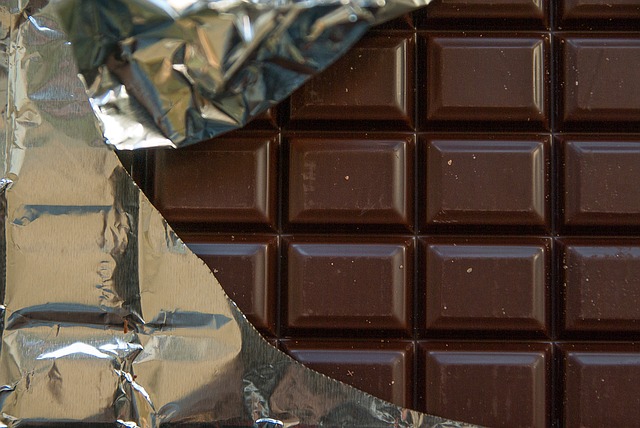The 38 Cent Bar of ‘Chocolate’
When I popped to the shops the other day to buy mayonnaise and some drinks, I spotted piles and piles of these bars of chocolate, in all sorts of different flavours. The shop I had gone to was one of those shops where they also bought old stock and sold it off for cheap, which meant I could get non-perishables, food that takes years to go off and drinks for pretty cheap. They also bought and sold stock that hadn’t sold elsewhere, and that was where these piles of chocolate came in. For a mere €0.38, I could get 90 grams of chocolate in a variety of flavors.
Curiosity and my sense of cheapness overcame me. I picked up a bar of what I assumed to be milk chocolate and paid for it, taking it home with the rest of my shopping. After sorting out the rest of the shopping, I decided to try this weird thing.
That was a mistake. I ate one square of ‘chocolate’ and realised that it didn’t actually taste of, well, anything. It was like eating cooking chocolate, if cooking chocolate had no flavour what so ever. I checked the date, this bar of… stuff… wasn’t due to expire until the 11th of May 2020. Or the 5th of November 2020. I don’t know. The food wasn’t off. It was just cheap and super low quality.

Now, I’ve had cheap chocolate before, but I’ve not had stuff as profoundly tasteless as this bar of stuff.
I then had a look at the ingredients. There were ingredients written in English, as well as a sticker with the ingredients written in Greek (since by law all food items have to have ingredients in Greek on them so people know what they are buying). The weird thing was that the ingredients called this “Milk Tablet”, not “milk chocolate” or “chocolate flavoured bar” or anything like that. The first ingredient was sugar, followed by partly hydrogenated vegetable fats, followed by a whey powder derivative from milk, fat-reduced cocoa powder, skimmed milk power and a bunch of emulsifiers and flavourings.
The total cocoa content was 8.3%. As in basically fuck all. I had basically taken a bite out of sugar and fat, but in a far less appetizing manner – after all, you can make a lot of nice things from sugar and fat.
This wasn’t chocolate at all. Hence why it was called “Milk Tablet” rather than anything chocolate-related. Because its cocoa content is so tiny that you might as well not bother. In fact, calling this stuff chocolate would be illegal in the EU because chocolate needs to have a minimum of 25% cocoa solids.
There’s a lesson to be learned here. I’m not going to say “don’t buy cheap chocolate” because not all chocolate is fake chocolate. But it’s worth having a look at the list of ingredients to see what’s actually in this stuff. If I’d done that, I would have saved myself 38 cents. Alternatively I could have just read the packaging and seen that the word “chocolate” is nowhere to be found, but most of the packaging was in Romanian so eh. I only lost €0.38 and some taste buds. Could have been worse.
But yeah, check your chocolate and make sure it is chocolate. And if you ever see an orange-coloured bar of ‘Laura’ brand chocolate, made by a company called Kandila, I’d recommend you avoid it. The stuff’s so bad, you can’t even cook with it. No wonder the store’s still flooded with that crap.